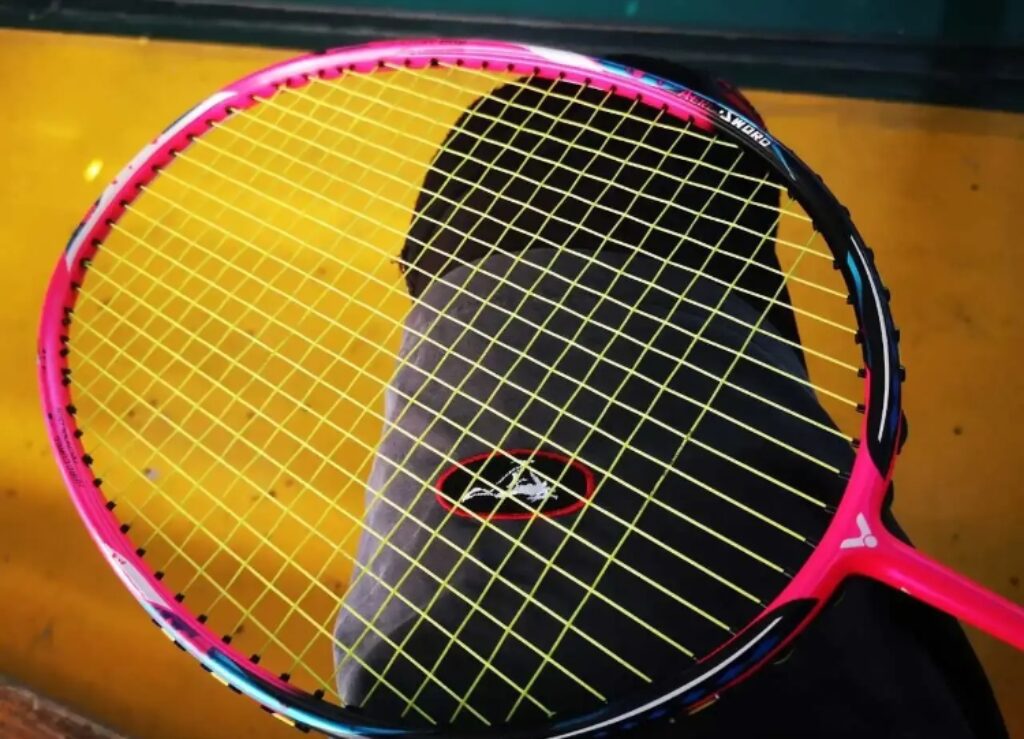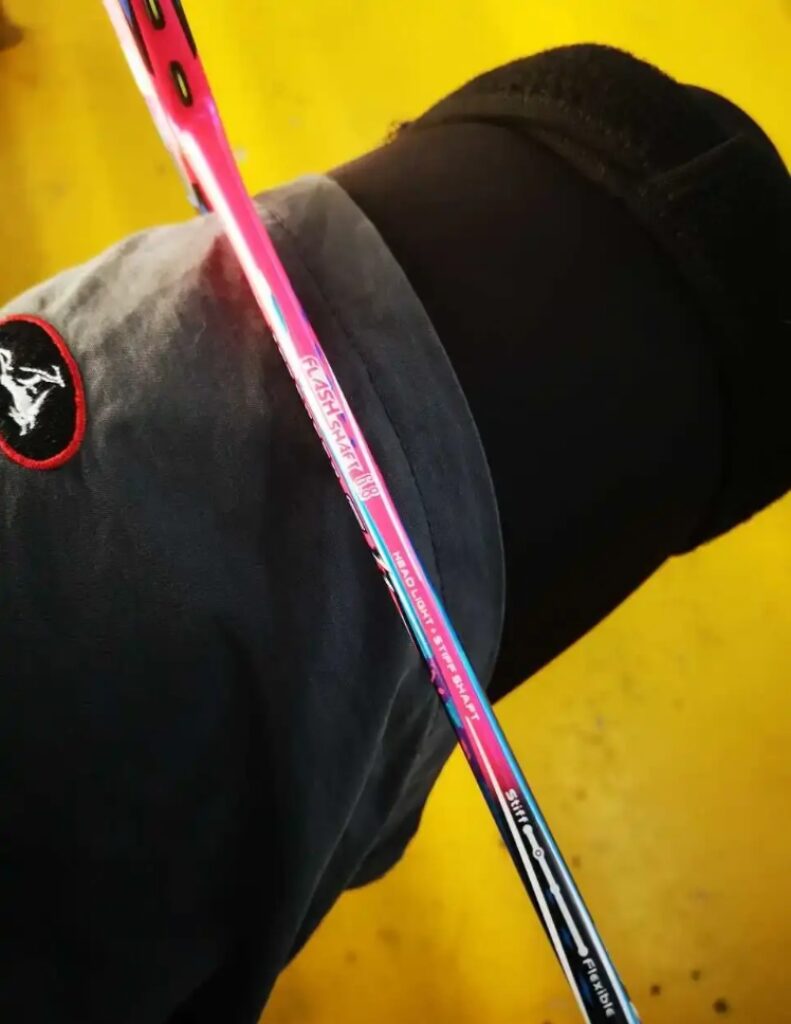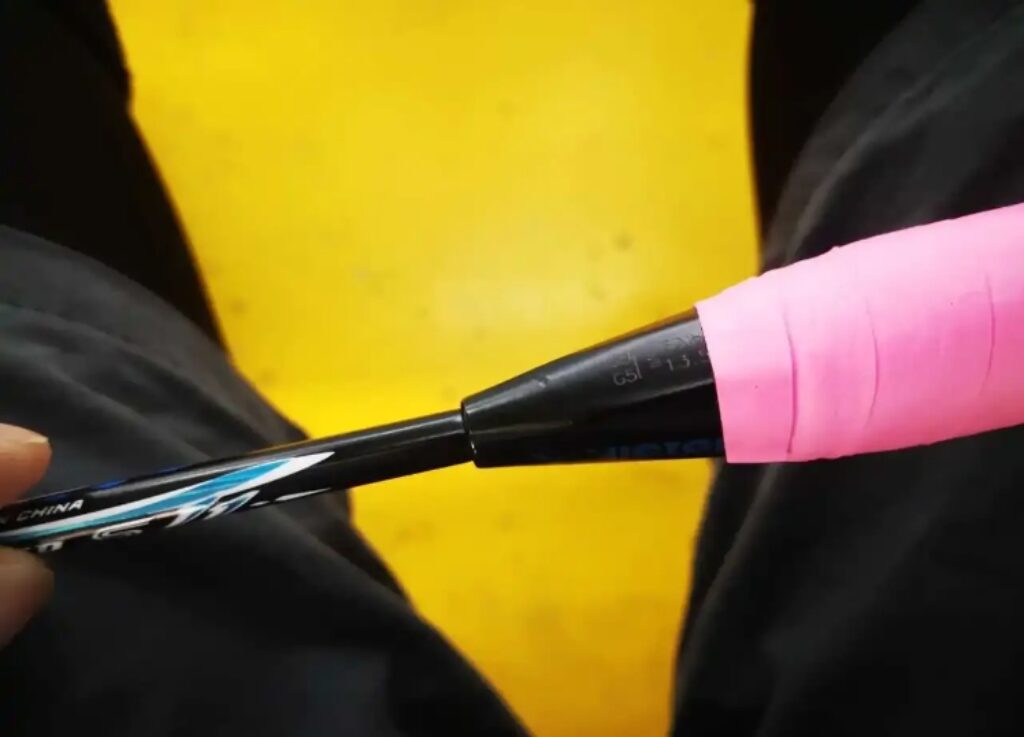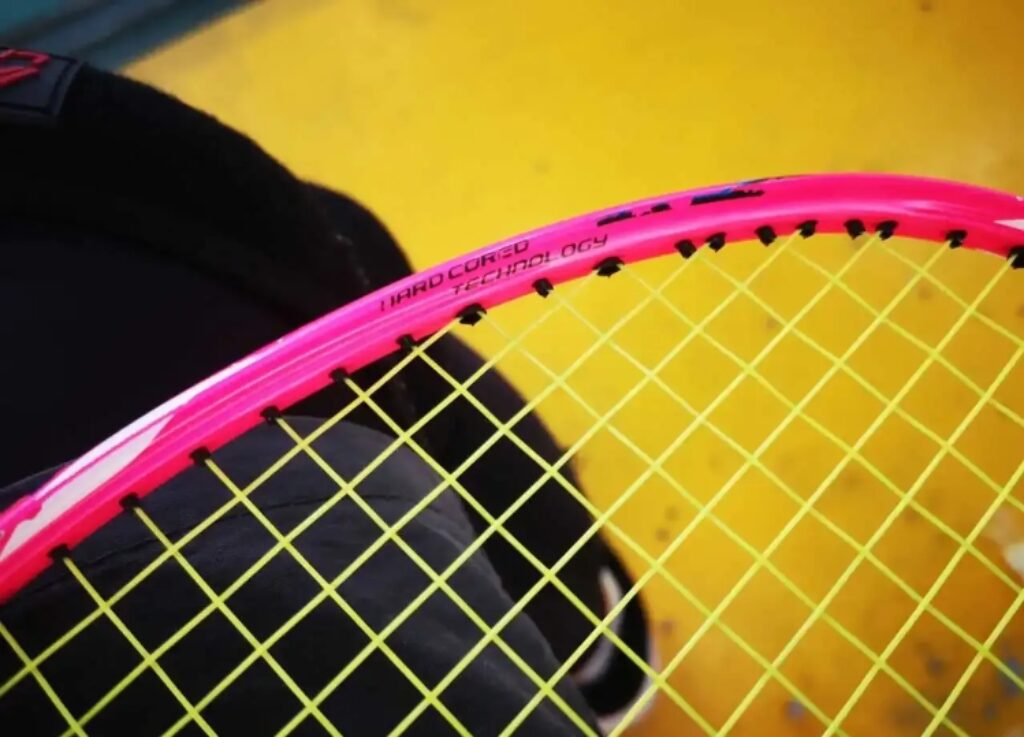The JetSpeed series has evolved from well-regarded mid-range models to more niche, syrup-like offerings, and then to the consistently popular JetSpeed 10 and 12. This represents a broad range of styles, yet I’ve only scratched the surface of this family so far. JetSpeed 11, also a high-end model, is said by some friends to be slightly lower in positioning compared to the 9/10/12 models. In the racket market, the performance of the JS11 has been relatively lukewarm. Paradoxically, this has made it a high-value, lesser-known racket for many players.

Specifications: 3UG5, with grip, total weight 92.0g, balance point 288mm, 6.8mm Flash Shaft with a length of 210mm, medium to stiff hardness, wind-breaking frame typical of the JetSpeed series, energy bow structure, 8–4 o’clock string grooves, and strung with 28lbs XB63.
In terms of appearance, the JetSpeed 11’s reddish-purple color is quite mesmerizing. Overall, the racket looks appealing, similar to the fresh and neutral aesthetic of the green JetSpeed 12. Based on the shaft’s hardness information, the JS11’s offensive capability should be slightly stronger than the JS12, although its appearance doesn’t scream aggressive. However, this racket does offer better resistance to collapse compared to the JS12.

The overall weight of the racket is slightly on the higher side, with a relatively thick handle. The balance point is modest at 288mm, providing a balanced 3U feel. As expected, the wind frame delivers excellent aerodynamic performance, and the current weight distribution still offers good swing speed. Upon initial contact with the shuttle, the racket’s overall stiffness is noticeably higher than the JS12, but not excessively so, making it relatively easy to handle. Especially during warm-up clears, the low power threshold makes it easy for intermediate players to generate high arcs and deep shots.
Although Babolat carbon is now Victor’s flagship shaft material, the 6.8mm Flash Shaft on the JS11 still offers good elasticity. During powerful smashes, the racket feels like a tightened slingshot, where part of the swing speed is converted into elastic potential energy through the shaft and frame deformation, releasing that energy upon shuttle impact. Simply put, it hits hard and hits well.

The JS11’s shots aren’t overly crisp, and as a speed racket, it noticeably increases ball-holding time, giving it more of a syrupy feel. Currently, it is strung with 28lbs of XB63, a relatively high-tension, stiff string. During powerful strokes, the prolonged contact between the shuttle and string bed adds extra downward pressure on backcourt attacks, which sometimes results in shallower shots. Additionally, due to the large sweet spot and increased ball-holding time, it provides more confidence in net play, making it an excellent tool for players who enjoy controlling the front court.

However, during testing, I discovered that the JS11 has a somewhat peculiar personality. As your performance level rises, the shaft seems to soften, and the spring-like effect can sometimes hinder continuous downward pressure. Despite the reinforced core, its torsion resistance is still slightly inferior to that of the JS10.
If I had to nitpick, I’d mention the thick handle, which can make it somewhat challenging to adjust grip during consecutive defense or drives. Also, the unusual downward pressure may cause some amateur players to either smash into the net or over-hit beyond the baseline while getting used to it.
While the 3U JS11 performs well in terms of continuity and offense, I believe that the 4U version might be more appealing to a wider audience, including myself. During my first trial of the JS11, it didn’t leave a particularly strong impression compared to the JS12. It wasn’t until recently, after playing a few serious matches, that I found its true feel. It’s genuinely a well-rounded speed racket, though no single aspect stands out remarkably, so it took some time for me to warm up to it.
I’m not sure how much the price has risen by now.


Leave a Reply